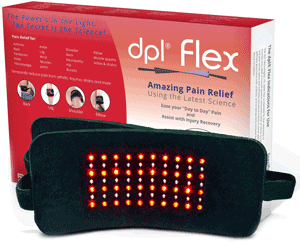Today gentlemen, we’re going to try to answer a fundamental question. How long does acne take to form?
This question is fundamental to successful acne treatment in so many ways. For example, if your acne is caused by a food sensitivity, how long after eating the offending food will you break out?
If you can answer this question, and you’re smart enough to still keep writing up your daily acne journal, you can very quickly trace the root cause and eliminate it.
Or if your acne is caused by an activity you do – say, sunbathing – how long after that afternoon lounging by the barbecue will you get acne?
One of the most basic mistakes, easily made by myself pretty much every day for ten years, is to blame what you did yesterday for today’s breakout and ignore everything that could have contributed to it over the past month.
Finally in this post we will debunk one of the top acne myths you will probably have read or heard a zillion times on acne forums, other blogs, or even from skincare professionals.
Let’s remind ourselves how acne forms
And let’s do so quickly, in four paragraphs:
Pimples are the result of a process which begins some time before they actually become visible. Firstly, inflammatory molecules present in the skin (triggered by any number of potential causes) cause irritation to the cells surrounding the opening of the pore, causing them to swell. This effect can be exacerbated by hormonal factors, chiefly testosterone, DHT and insulin.
Deep inside the pore, the skin cells which line the hair follicle die and are shed into the pore space. Here, they mix with sebum from the sebaceous glands (also in the follicle) and are usually transported out of the pore by this oil. In acne patients, an overproduction of sebum coupled with an overproduction of keratin (which causes the cells to stick together in bigger clumps) results in a sticky plug which gets stuck on its way out.
The blocked follicle is now a comedo, trapping oil within the pore. This low-oxygen space filled with rich skin oil provides the perfect environment for a species of bacteria called P. acnes to thrive and multiply. This is now a bacterial infection and the trapped oil and bacteria will cause the pore to swell and rupture. At this point your body’s immune system will react, sending more blood to the area (causing redness) and infection-fighting white blood cells (causing pus).
The comedo can be open to the air, which will result in a blackhead as the sebum oxidises (like metal rusting in the open air), or it can be covered by the top layer or skin cells (when the blockage occurs deeper in the pore) in which case it will form a whitehead, a cyst or a nodule.
So how long does this process take?
Conventional thinking is two weeks, although from personal experience (for me at least) now I know what causes my own acne it would appear to be closer to around 7-10 days.
Annoyingly, there is only one reputable study I can find which has even begun to consider this question. That study can be found here.
The conclusion the researchers come to backs up my experience – the time period from the initial inflammation to the formation of acne is around 7-10 days.
Without wishing to confuse the issue, it can also be a great deal faster than this – even one or two days in some cases.
This is because certain irritants – say, the washing powder you use for your pillowcase – actually irritate the skin much faster, kicking off the initial stage of the pimple formation process sooner than would otherwise occur.
In this case the acne-like eruption, which is actually an allergic reaction, can spring up relatively quickly. Another time this happens is using a new acne product – say a mineral oil like Bio-Oil, which can be irritate the skin cells almost on contact.
The important thing is to recognize that this process can differ depending on the root cause. For “conventional” acne, i.e. triggered by genetics, hormones and lifestyle as opposed to an “acne-like breakout” caused by something else, 7-14 days is the general timescale to keep in mind.
Debunking a top acne myth
Based on this knowledge, please reconsider the following bullshit you have probably read 100 times on acne forums.
I cannot emphasize this next statement enough. In keeping with internet tradition I will use capitals, bold, underlined and three exclamation marks in order to make the point more strongly.
THE FACT THAT IT TAKES TWO WEEKS FOR ACNE TO FORM DOES NOT THEREFORE MEAN THAT A SUCCESSFUL ACNE TREATMENT WILL TAKE AT LEAST TWO WEEKS TO WORK!!!
This is such a stupid case of illogical thinking and you will hear it all the time.
Just because acne takes two weeks to form, why does that mean it’ll take at least two weeks to clear up if you’re actively treating the correct route cause?
I mean think about it, name one other medical condition where the treatment takes at least as long as the “formation” period.
Take malaria for example. It can take anything up to twelve months for symptoms of malaria to become apparent after being bitten by an infected mosquito. Typically symptoms occur after about three to four weeks.
Does that mean any malaria treatment will take at least a month, maybe even a year, to rid you of malaria?
Of course not! Malaria patients usually make a full recovery in around 7-10 days following the correct treatment.
The whole point of treatments is that they treat – they don’t simply prevent further outbreaks and wait until your existing condition has cleared up all by itself.
Essentially, the bullshit statement that
“it takes 6 weeks for skin cells to completely regenerate, therefore you shouldn’t expect any results from your acne treatment for at least three months”
Basically means
“Once acne has started to form there is nothing in the universe which can stop it”
And therefore that
“Any successful acne treatment only ever works by preventing new pimples forming, you have to let existing pimples form and then heal themselves”.
Healing and treating are two different processes
Let’s make a fundamental distinction here – healing and treating are two different processes:
- The objective of treatment is to stop further acne breakouts, and prevent any acne already starting to form from actually erupting
- Once you’re treating acne successfully, you are then simply waiting to heal any acne which has already erupted.
You will then be left with clear skin!
Much will depend on the speed at which your body naturally heals itself. This is very individual and is affected by your health status, age, genetics, stress, environment and much more.
The type of acne you suffer from will also play a part – it will take longer for a deep-seated cyst to subside than it will for a small, superficial whitehead, and correspondingly longer for the red scar to fully disappear.
One thing which will massively help the healing process is not picking at it! Skin picking must be avoided at all costs unless absolutely necessary – read this post and you’ll think twice about picking ever again!
A tiny red papule might take a couple of days to fizzle out, a whitehead perhaps 3 to 10 days, and a nasty cyst even up to a month.
But the rate at which new acne forms should dramatically reduce, if not stop altogether, once you hit upon a successful treatment option for you.
While supplements like zinc and chromium helped a great deal, when I figured out what was wrong with my diet and fixed what and when I eat, new acne stopped forming almost from day one.
Within a few days my skin simply had to heal what had already erupted – it did not take two weeks of eating and supplementing this way before I noticed any difference in breakout frequency.


